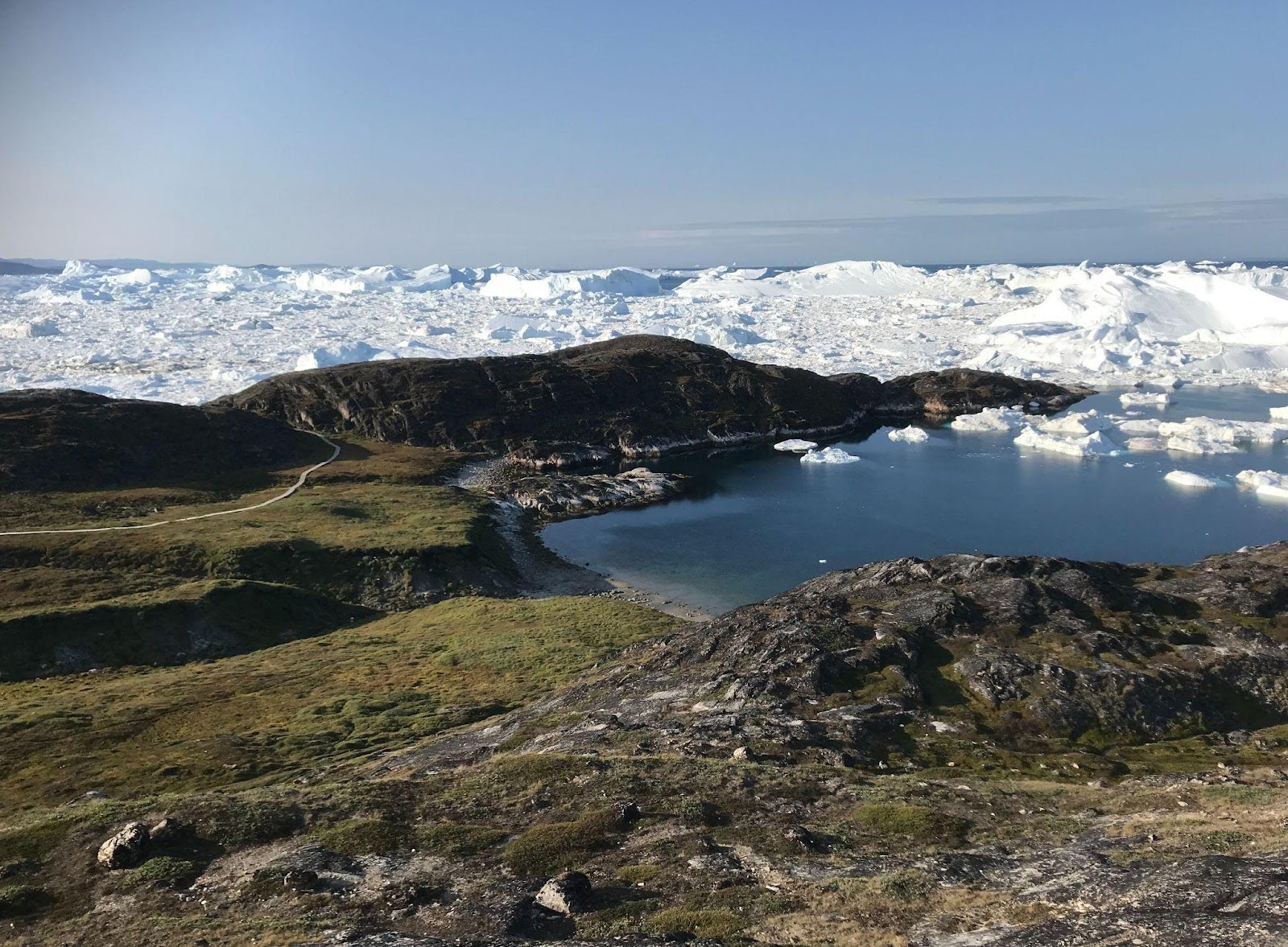Downloads
DOI:
https://doi.org/10.58981/bluepapers.2025.2.01Keywords:
UNESCO World Heritage, Sermermiut, permafrost, erosion, cultural heritageAbstract
The Sermermiut archaeological site at the Ilulissat Icefjord contains cultural remnants from three Inuit cultures spanning nearly 4000 years. This unique site is now under threat from climate change and oceanic forces. The permafrost layer, which has long supported the site, including the cultural-historical ruins located on it, is thawing, causing destabilization of the ground and severe erosion of the slopes. A fieldwork initiative conducted in the summer of 2024 by collaborative teams from Greenland’s cultural and heritage institutions, in partnership with international technical assistance programs, studied these impacts using advanced monitoring techniques and community involvement, setting an example for adaptive management strategies that align with the UN 2030 Agenda. This article highlights how climate change is affecting both cultural heritage and contemporary life at the Ilulissat Icefjord, and emphasizes the importance of combining scientific research, responsible site management and local community engagement to safeguard this UNESCO World Heritage property. Through adaptive management, integration of local knowledge and strong collaboration across sectors, the Ilulissat Icefjord can remain both a globally significant natural site and a resilient, living Arctic community in a changing climate.
How to Cite
Published
Issue
Section
License
Copyright (c) 2025 Bo Albrechtsen

This work is licensed under a Creative Commons Attribution 4.0 International License.
References
Bonsell, C., H. Harmsen and M. Myrup. 2025. Investigations of Permafrost Degradation and Coastal Erosion at Sermermiut, Ilulissat Icefjord UNESCO World Heritage Site, Avannaata Kommunia 15–19 July 2024. Greenland National Museum and Archives Technical Report no. 202403_01. Nunatta Katersugaasivia Allagaateqarfialu.
Elberling, Bo, H. H. Christiansen and B. U. Hansen. 2010. “High Arctic Soil CO2 and CH4 Production Controlled by Temperature, Water, Freezing and Snow.” Advances in Ecological Research 40: 441–472. https://doi.org/10.1016/S0065-2504(07)00019-0.
Harmsen, Hans, Jørgen Hollesen, Christian Koch Madsen, Bo Albrechtsen, Mikkel Myrup and Henning Matthiesen. 2018. “A Ticking Clock? Preservation and Management of Greenland’s Archaeological Heritage in the Twenty-First Century.” Conservation and Management of Archaeological Sites 20 (4):175–98. https://doi.org/10.1080/13505033.2018.1513303.
Previdi, Michael, Kimberly L. Smith and Lorenzo M. Polvani. 2021. “Arctic Amplification of Climate Change: A Review of Underlying Mechanisms.” Environmental Research Letters 16 (9): 093003. https://doi.org/10.1088/1748-9326/ac1c29.
Selyuzhenok, Valeria, Igor Bashmachnikov, Robert Ricker, Anna Vesman and Leonid Bobylev. 2020. “Sea Ice Volume Variability and Water Temperature in the Greenland Sea.” The Cryosphere 14 (2): 477–95. https://doi.org/10.5194/tc-14-477-2020.
UNESCO World Heritage Centre. 2004. “Ilulissat Icefjord.” UNESCO. https://whc.unesco.org/en/list/1149/.




